- Bengal
produced a galaxy of leaders who contributed to Spirituality and Nationalism.
Article tells about them & explores why West Bengal does not produce such
leaders any more.
- Given how
much leaders of Bengal contributed to India, the people of India must support a
government in West Bengal that allows such talent to blossom.
While listening to speeches during the West Bengal (WB) election campaign it struck me that WB has not produced a spiritual leader for decades. The last name was Srila Prabhupada, founder of ISKCON. That was in the 1960’s.
So why
has Bengal ceased to produce spiritual leaders? Was it because of the falling
prosperity of WB or Communist rule? Read on.
Bengali
leaders of the 18-20th century were thought leaders, social
reformers and educationalists whose thoughts had an impact across India. Perhaps,
they defined modern India and contemporised Sanatana Dharma. Nationalism
germinated in the soil of Bengal and then spread to other parts of India.
The focus
is on West Bengal since East Bengal or Bangladesh is now a different country. Article
starts by covering some great spiritual and nationalist leaders (period 10-14th
century and starting 18th century. The historical parts of article are
based on inputs from The History and
Culture of the Indian People published by the Bharatiya Vidya Bhawan.
1. Atish Dipankar (980 not sure to 1053)
He is a highly regarded Buddhist Master. To read
about his Spiritual
Journeys from India to Tibet via Sumatra.
Muslim invasions contributed to the demise of
Buddhism in Bengal and Bihar. Thus, all creative utterances, except in the
South, came practically to a standstill in the 13th century. The
South retained its classical vitality longer because it maintained through her
maritime trade outside contacts. Vol 5, Pg.
675.
2. Chaitanya Mahaprabhu (1486 to 1533)
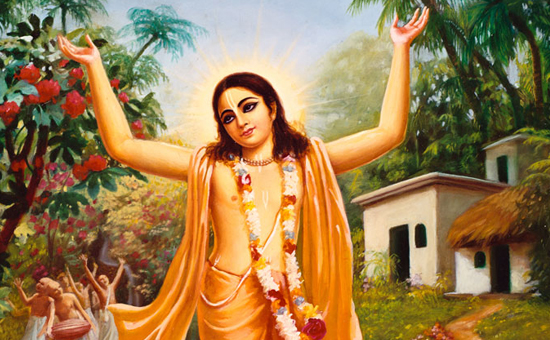
Mystic
Saints like Kabir and Chaitanya, whose noble lives and religious teachings,
elevated religion to a high spiritual level. Their teachings permeated the very
texture of Indian life. Vol 6 Pg. xxvii
Kabir was
one of the disciples of Ramananda, the other well-known one being Sant Ravidas
(a cobbler). Although a spirit of sympathy for lower castes was a feature of
Vaishnavism, Ramananda made it fundamental to his doctrine. The second change
he brought about was the use of regional language instead of Sanskrit. The
third reform was the introduction of the worship of Rama and Sita in place of
Krishna and Radha. Chaitanya differed in some respects from Ramananda and
Kabir.
Chaityanya’s (full name Krishna-Chaitanya) family migrated from Sylhet (modern day Bangladesh) to Nadiya in West Bengal. At age of 22 visited Gaya, where he met a recluse Isvarapuri who changed the
course of his life.
He started
a new type of devotional song called kirtana
that often consisted of chanting the names of Hari and Krishna, sung in chorus
to the accompaniment of loud instrumental music.
Chaityanya
lived close to Puri. There the Gajapati king of Orissa and Vasudeva
Sarvabhauma, a renowned Vedantist became his followers. He travelled to South
and West India and Vrindavan, laid stress on passionate love for God as the
only way to liberation and stressed various episodes described in the Bhagwata.
The
sacred sites of Vrindavan were deserted & forgotten. Their recovery by the
Vaishnavas of Bengal, at the instance of Chaityanya, & conversion of place
into a great religious centre must be regarded as one of the most important
events in the history of Vaishavism. Vol
6, Pg. 567
Note that
for the 24 years after he renounced the world to become a sanyasin, he lived for only one year in the dominion of Husain Shah
and for over 20 years in the Hindu kingdom of Orissa. Vol 6 Pg.
xxxii.
Chaityanya infused a new spirit in the Hindus of Bengal, who abjectly surrendered etc caused by 300 years of political servitude and religious oppression. Raja Ram Mohan Roy said with reference to religious bigotry and proselytization of the Muslims, that “we have been subject to such insults for about nine centuries.” Vol 10 Pg. 4 Dwarkanath Tagore wrote in a letter dated 6/12/1838, “The utter destruction of learning and sciences was an invariable part of the Mahomedan system.” Vol 10 Pg. 13 Lack of contact with progressive forces of the world
also contributed to a deterioration of Hindu society.
Chaitanya
gave up his body in 1533, the next great spiritual leader was born in 1718.
3. Sri Ramprasad Sen (1718 -1775)
“Ramprasad Sen (born near Kolkata), through his devotional words expressed in poetry and songs, left imprints on the hearts of Bengalis since the 18th century. This great mystic poet composed thousands of songs about the Divine Mother Kali. His songs were a dialogue between the soul and the mind, and explained the essence of spiritual life and the principles of classical Indian Philosophy.” Source
“His bhakti song-poems, called Ramprasadi, are sung throughout Bengal to this day. At heart a simple lover of God, he was also a practitioner of an esoteric tantra yoga path of Divine Mother worship. One biographer of Paramhansa Yogananda said that as a teenager, Yogananda often carried a book of Ramprasad’s songs around with him.” Source
Note that
it was post the East India Company winning The Battle of Plassey in 1757 and
their subsequent rule over Bengal did India have a closer contact with Europe.
It was during this period (1707-1818) that Indians learnt English which had far
reaching consequences on Indian thought, education, social and religious
concepts. The advent of the 19th century witnessed a resurgence of
ideas (nationalist, cultural, spiritual) in India after centuries.
4. Lahiri Mahasaha Baba (1828 to 1895)
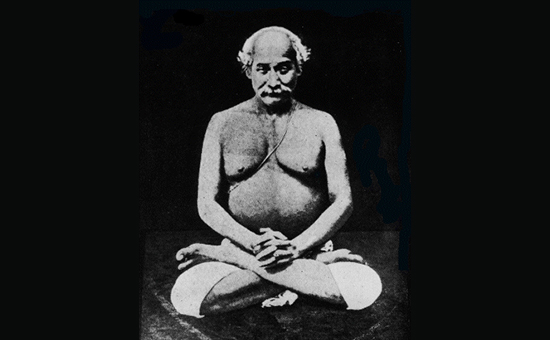
Baba was
born as Shyama
Charan Lahiri in the Nadia
district of Bengal.
When he was about five the family moved to Kashi permanently.
Kriyacharya Jyoti says, “Kriya masters have constantly pointed out how Kriya Yoga has been referred to in many ancient texts albeit obliquely and covertly as a technique that propels the practitioner towards enlightenment. To quote two:
1.“As long as the Praṇa has not entered the middle channel (Sushumna) and the Bindu is not steady by trained Praṇa; as long as the mind does not reflect Dhyan without effort, so long all the talk of knowledge and wisdom is merely the nonsensical babbling of a mad man.” Hathayoga Pradipika Chapter 4 on Samadhi
verse 114.
2.“Others offer (sacrifice) the inward prone into the outward bound apana and the apana into the prana; countering the opposing currents they remain constantly engaged in pranayam.” Bhagavad Gita Chapter 4
Jnana Yoga verse 29.
But
nowhere in the texts is laid out the full format of the practice laid out.
Kriya Yoga was a secret practice passed on to the sincere disciple by an
exacting Guru in the true lineage of the Guru Shishya Parampara. That is until Lahiri
Mahasaha, who was the first to share this practice with the ordinary
householder and people.
That to me, is the greatest contribution of Lahiri Mahasaha who by example showed how ordinary humans can achieve the greatest spiritual magnificence.”
Mahasaha’s chief monastic disciple was Swami Sri Yukteshwari Giri. He was born in Serampore (West Bengal) in 1855 with name Priyanath. His disciple was Paramhansa Yogananda, born as Mukunda Lal Ghosh in Gorakpur (Uttar Pradesh) in 1893.
5. Sri Ramkrishna Paramhansa (1836-1886)
He was born Gadadhar Chattopadhyaya in Hooghly
district. At 17 he was appointed as priest in the temple of Goddess Kali at
Dakshineswar, on the banks of Ganga near Kolkata. He expressed the highest
truth in simple sentences, looked upon Kali as a visible deity who should talk
with him, realized divinity in humanity and emphasized service of mankind as a
means of liberation. His most famous disciple was Swami Vivekananda. Guru and
shishya took spirituality to the masses.
Spiritual life and means to attain it were
described in ancient Hindu scriptures, but they were either forgotten or
disbelieved and nothing but an actual vision of it in Ramakrishna could have
impressed upon the modern Hindu minds, the real value and nature of this great
treasure of ancestral knowledge. Vol 10
Pg 122
He initiated his wife
Sarada Devi who later became the Sangha
Janani of the Ramakrishna Order.
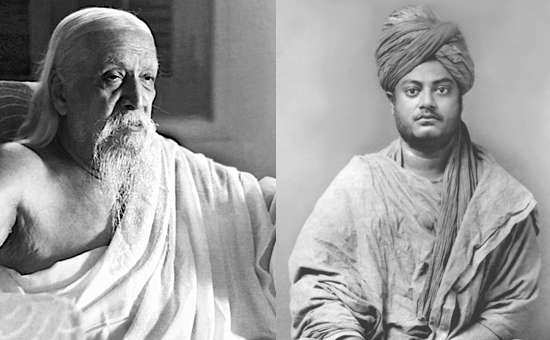 Sri Aurobindo & Swami Vivekananda.
Sri Aurobindo & Swami Vivekananda.
6. Sri Byamakhyapa (1838 to 1911)
Sri was born Bamacharan Chattopadhyay and popularly known as the “mad saint”. “Bamakhepa worshipped
Mother in the form of Tara and became a famous Tantric saint practicing sadhana
at the Trapith cremation ground. Tarapith is in the district of
Birbhum, birthplace of famous Vaishnav and Saiva saints. To
read more
“Soon Bamakhyapa became famous for his yogic powers and even people from far away came to see him. Some sought nothing but his blessings while others asked to be healed or helped in distress. Bamakhyapa healed many sick people with his psychic powers. The saint of Tarapith through his holy presence sanctified the place and the people who came in contact with him. He entered mahasamadhi (final liberation) in 1911.” Source and to read more
Impact
of British Rule on Bengal
Briefly, “With the conquest of Bengal, the Company’s servants edged out competition and weavers were forced to supply their goods at a price decided by the Company. The land revenue system was reorganized giving Zamindars contracts for collection of the revenue. The company’s servants made colossal fortunes. Following 1793, the condition of the agriculturists in Bengal greatly deteriorated.”
“Indigo was an important export item. There were roughly 400 factories in Bengal and Bihar and commodities worth pound 3.6 million were exported. But indigo cultivation led to a great oppression of the cultivating class by the British.”“Every time a ruler lost a war, he was forced to pay war expenses or buy peace from the British. The source of this money was none other than the common population. For example, Shuja-ud-daulah paid the British men INR 50 lakhs as war expenses for the Battle of Buxar.” Source
Famines
in Bengal had an adverse impact esp. the famines of 1769-70 and 1943. Source
. Also read The Role of
Currency in the 1770 Famine
So
notwithstanding the resurgence of ideas because of British rule, the economic
impact was a disaster for Bengal. India is in the 75th year of
independence. Can we still blame the British if we have not undone their wrong
doings?
A senior resident Bengali says, “As is known the intent of British education was to create a class of people who would act as a buffer between the rulers and the masses. Such education changed the psyche of the Bengali people. British culture is materialistic. They developed science and technology to add to their comfort of life and expanded the empire to control resources and global trade. So most of the Bengali middle classes chose to become closer and useful to the colonizers. English education gave them access to riches and status. This is substantiated by Swami Vivekananda’s call for becoming self-confident and abjuring habit of looking towards the west for everything.”
7. Swami Vivekananda (1863 to 1902)
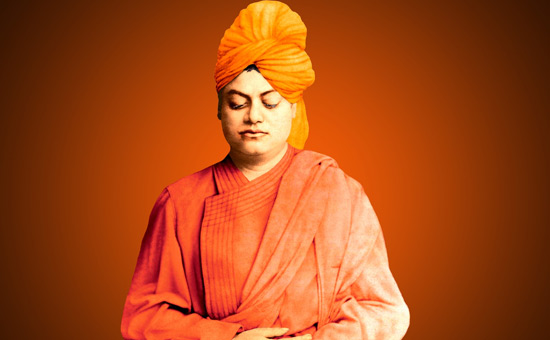
Swamiji
enabled India of the 19th century to withstand the onslaught on Indic
culture and religion by the West. He communicated nationwide his views on
religion and the spiritual basis of the Hindu civilization and contributed to
the rise of nationalism in India.
He
championed the cause of Hindus in his address
at the Parliament of Religions, Chicago on 7/9/1893 and took Yoga
and Vedanta
to the West. He founded the Ramakrishna Mission in 1897 that today runs schools
and hospitals
across India.
His 1893 speech, “not only restored self-confidence of the Hindus in their own culture and civilization but quickened their sense of national pride and patriotism.” Vol 10 Pg. 489 Swamiji continues to
inspire millions worldwide.
8. Maharshi Aurobindo (1872 to 1950)
P
Mukherjee wrote in Sri Aurobindo, His
Life and Yoga by P K Sen, “The revolutionary role Sri Aurobindo played by preceding and anticipating the mass movement that Gandhiji was to lead 15 years later with the blueprint left by Aurobindo.” Pg. ix
He worked
in the Baroda State for ten years. To see pictures of his home, now ashram. “The intense tapasya for knowledge in Baroda resulted in awakening in the self of Sri Aurobindo, the fount of integral knowledge.” In Baroda he got his initial guidance in the path of yoga from a Maharashtrian Yogi, Lele Maharaj.
He
travelled all over India organising the underground resistance network of the
Freedom Movement, and later guiding and inspiring it through his powerful and
inspiring articles in the Bande Mataram and Karmayogin. In 1910 Sri Aurobindo left for Pondicherry.
Sri
Aurobindo initiated the first National College with an altogether new system of
education more suited to the Indian mind and the independent nation for which
he was working. He subsequently wrote in the Arya, a series of six different
and major books covering the vast domains of philosophy, yoga, Veda, Upanishad,
Bhagavad Gita, social and political development of humanity, etc. The scope and
depth of what he wrote is still considered unequalled.
The role Sri Aurobindo played publicly in politics was brief, at best 3.5 years of which one year was in prison. “Even in this short period he influenced the nation with his political and spiritual ideals in a manner that new life got infused into the body of the nation.”
A reading of excerpts from Aurobindo’s writings in book India’s Rebirth, enriched me significantly and helped understand India. I
loved the vast knowledge and indisputable reasoning.
9. Ma Anandamoyee (1896 to 1982)
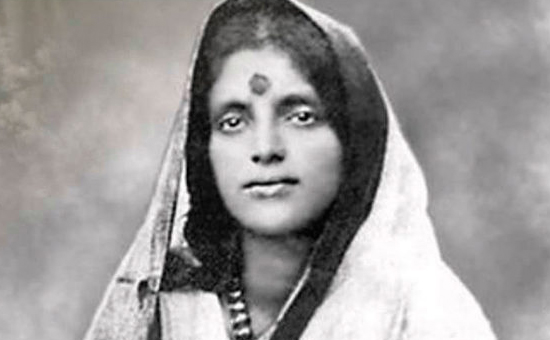
Ma was born in a small village Kheora in modern day
Bangladesh.
“In Dhaka where she first gained recognition, She was known as “Manush
Kali”, that is, the ‘living Kali’. Kali is the presiding Deity of Bengal so that was quite understandable. When she moved out of Bengal and visited other provinces, her presence elicited the same type of response, even at her first appearance. On the shores of the Holy Narmada, she was greeted as “Devi Narmada”. In Madurai she was hailed as the Goddess Minakshi by surging crowds. In the Punjab she was given the same place of honour as the Holy Granth Sahab. In Vrindavan, the respected Mahatma, Sri Haribabaji Maharaj saw in her his adored Deity, the Lord Gauranga.” Excerpts from Introduction to Sri Ma’s Life
“The central theme of all her words and expressions is this: Life and religion are one. All that you do to maintain your life, your everyday work and play. All your attempts to earn a living should be done with sincerity, love and devotion, with a firm conviction that true living means virtually perfecting one’s spiritual existence in tune with the universe. To bring about this synthesis, religious culture should be made as natural and easy as taking our food and drink.” Source
When I saw her picture connected with Ma instantly. Something
very special about her.
10. Sri Anukul Thakur (1888 to 1969)
He was
born in Pabna district of what is now Bangladesh to Sri Shibchandra Chakravarty (Kanyakubja Brahmin) and
Manmohini Devi. His mother remained his guru throughout his life. He was lover
of the mankind. Anukulchandra set up an Ashram at Pabna (later it was named Satsang).
At Deoghar in India in 1946, for fostering spiritual development a new Ashram
had been set up by him. Source
To read about Sri Anukul Life
Four out
of the ten spiritual leaders referred to above were born in modern day
Bangladesh. So has East Bengal becoming a Muslim nation contributed to West
Bengal not producing spiritual leaders?
11. Bankim Chandra ChatterjiHe is the author of India’s national song ‘Vande Mataram’. It is sung to this day and highly revered. To hear respected Lata Mangeshwar sing Vande
Mataram in the movie Anand Math
12. Srila Prabhupada (1896 to 1977)
Born as
Abhay Charan De, he is the founder of ISKCON. In 1969, at the age of 69 he
travelled to New York in a cargo ship. To read his biography in brief
or read with video links here
Some
other distinguished Bengalis.
13. Jagadish Chandra Bose (1858 to 1937)
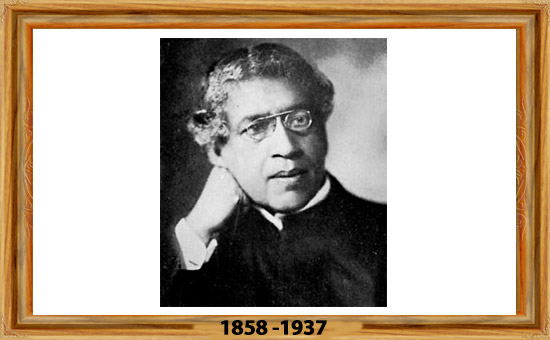
He
was born in Munshiganj district of Bangladesh. He
pioneered the investigation of radio and microwave optics, made significant
contributions to plant science, and laid the foundations of experimental
science.
“Bose Institute was set up in 1917 by Sir Jagadish Chandra Bose, the founder of modern science in the Indian subcontinent. It is Asia's first modern research centre devoted to interdisciplinary research and bears a century old tradition of research excellence. As outlined below, the scientific contributions of Acharya J.C. Bose in both physical and biological sciences are colossal.” Source
Also
read Father
of Radio Science and The
Voice of Life (inaugural address dedicating the Bose Institute to
the nation.
14. Rajarammohan Roy (1772 to 1833)
He
was born in Murshidabad district of Bengal, a social reformer, founder of
Brahmo Samaj and started the first Bengali
language weekly newspaper. To read more about Roy and Here
15. Rabindranth Tagore (1861 to 1941)
He was
born in Kolkata as Rabindranath Thakur. Tagore won a Noble Prize in 1913 for
his collection of poems Gitanjali and is the author of India’s and Bangladesh’s National Anthem. He was a poet, musician and painter amongst others. To read more about him and
10
lesser known facts about Tagore
16. Ishwar Chandra Vidyasagar (1820 to 1891)
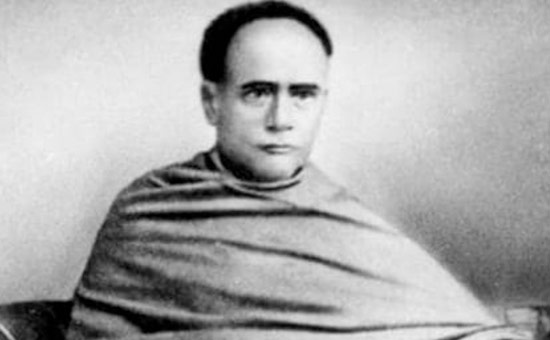
He was born Ishwar
Chandra Bandyopadhyay, a social reformer and educationist. “What connects him to Bengalis most strongly to this day was his role in making the Bengali alphabet more suited for printing, and for his simplification of Bengali language education.” Source
“He opened atleast 35 girl’s schools in Bengal between November 1857 and May 1858. No wonder Rabindranath Tagore said on his passing - "One wonders how God, in the process of producing forty million Bengalis, produced a man!” Source
17. Surendra Nath Banerji (1848 to 1925)
He
was born in Kolkata and founded the Indian National
Association in 1876, the first Indian political organisation of its kind. To read more
18. Netaji Subhash Chandra BoseThis author believes that the Indian National Army founded by Netaji Bose contributed to India’s freedom. Read How INA contributed to India’s Independence
So why is Bengal not producing leaders like in the past?Spirituality requires peace, law and order, an open mind and to an extent economic prosperity. Bengal became impoverished during British rule. Kolkata was the centre of trade, commerce, arts and culture and an economic hub around 1970. Yet today! Here Sanjeev Sanyal speak
WB has a literacy rate (76.2%) higher than India’s national average (74.02% per 2011 Census), the intellect of Bengalis is enviable yet Bengalis move to the rest of India to find employment!
An entrepreneur (Bengali working in Mumbai) says, “The commies ripped the soul out of Bengal, impoverished its mind and body. And then Mamta killed its soul with street tactics. Many clear sighted thinking Bengalis left Bengal. Spiritual leaders come out of nourishment of mind, body and soul. Rise of electricity cuts, lack of jobs, despondency, street politics and political sloganeering substituted preaching and enlightenment.”
The
Congress ruled WB from 1947 to 1967 and 1972-77. The Left (Communist Party of
India (Marxists) ruled WB from 1977 to 2011 and Trinamool Congress thereafter.
The United Front (included Communists too) ruled from 1967-69.
Violence
and underinvestment in physical infrastructure are some of the factors that
deterred fresh investments in the state. The Bandh culture had become too
prominent.
A
corporate leader (Bengali working in Delhi) tells about attitude of resident
West Bengalis, “Cholche
cholbe (it is ok to carry on this way). Lack of inertia for hard work when living inside Bengal. Political bent of mind. They try to read politics in everything instead of "economics". Poor leadership. Historically the state did not get a good motivational and benevolent leader.
Leaders make a difference everywhere. Bengal is no different.”
West Bengal was a communist bastion for 3 decades. Briefly their approach is -
“Communism does not allow you to believe in God. They will destroy anything religious. It demands complete loyalty. The problem the communist fathers figured out was religious people looked upon god as the ultimate authority i.e. higher than the communist party. This eroded their authority and control that Communists demand for the functioning of their ideology. Therefore, god and religion had to go for them to seek total control of the minds of the people.
That is why one of the first targets of a communist takeover and a pre-requisite to their having enough followers to effect a takeover is first the destruction of religion.”
Another
impact of communist rule was people lowering their aspirations and Profit becoming
a dirty word. This contributed to driving away talent from WB.
When I look at the galaxy of leaders that Bengal has produced and their achievements am baffled with WB’s lack of spiritual leaders and economic progress today. Some of India’s best economists are Bengalis but they work outside West Bengal.
Given how
much leaders of Bengal contributed to India, the people of India must support a
government in West Bengal that allows such talent to blossom.
Also read
1. How to
Re-awaken Bengal – video Sanjeev Sanyal, Rajiv Mantri, Swapan Dasgupta, Harsh Madhusudan etc.
2. Kriya Yoga – speedy, scientific and practical